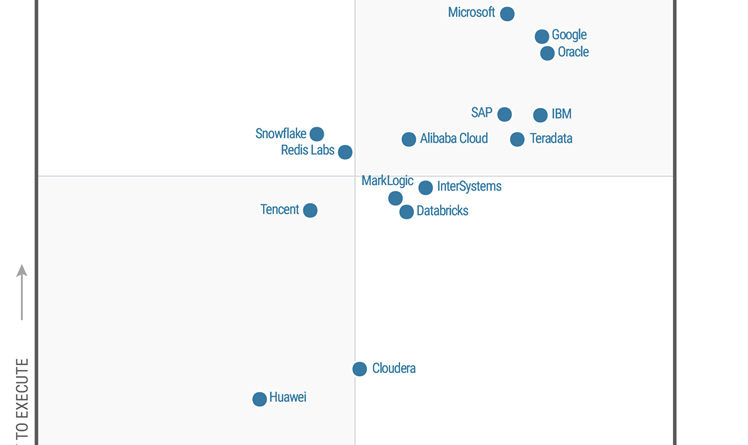Microsoft named a Leader in Gartner’s 2020 Magic Quadrant for Cloud DBMS Platforms
We would like to share that Microsoft has been named a Leader in the 2020 Gartner Magic Quadrant for Cloud Database Management Systems. Our placement is based on our ability to execute and our completeness of vision and is a testament to our ongoing innovation and integration of a broad data portfolio into a cohesive cloud data ecosystem.
Cloud and data technologies have been the focal point of digital transformation as organizations democratize and modernize their data platforms to turn data into a strategic asset. Our customers have shown tremendous resilience as entire industries have shifted under a landscape of economic uncertainty and they rely on Azure for a full range of use cases. Gartner evaluated these use cases across a wide range of industries and deployment sizes for this Magic Quadrant.
Figure 1: Magic Quadrant for Cloud Database Management Systems1
A strong data ecosystem
In the twenty-five years since SQL Server was first released, Microsoft has consistently delivered value to our database customers, starting by building support for operational, business intelligence, and analytical workloads into a single SQL Server product. With the launch of Azure SQL Database in 2010, we brought that same mindset to delivering a fully managed, evergreen database that never needs to be patched or upgraded.
We support customers’ digital transformation through a comprehensive and connected ecosystem that provides a clear path for cloud migration and app modernization. Azure services across the portfolio easily integrate with each other and third-party offerings, expanding capabilities beyond what was possible on-premises. For example, Azure Synapse Analytics combines the best of enterprise data warehousing and Big Data analytics into a unified experience that delivers powerful insights at limitless scale.
Familiar tools and environments between on-premises and Azure mean that our customers can reuse their skills and experience in the cloud. Azure SQL demonstrates this with support for SQL Server workloads over a variety of application patterns, while maintaining the most consistent SQL Server code base of any public cloud.
We’ve further expanded the breadth and depth of our portfolio with multi-model capabilities across data management offerings, making deployment simple and straightforward. Azure Cosmos DB is designed for developers with a wide range of APIs spanning SQL and NoSQL and provides near real-time analytics with Azure Synapse Link. This tighter integration between our analytics and operational databases brings instant clarity and further accelerates new insights for our customers’ businesses.
Global insights and momentum
According to Gartner, the cloud infrastructure and platform services market grew 42 percent year-on-year (2018-2019), with PaaS databases growing 53.8 percent year-on-year over the same period.2 Looking ahead to the next two years, we see accelerated momentum continuing to reshape the data landscape with databases that are truly built for the edge, empowering organizations to store and process their data at or near the collection point including built-in intelligence and analytics. In addition, hybrid multi-cloud scenarios will allow customers to run workloads across on-premises and cloud infrastructures.
Next steps
If you’re ready to harness the power of cloud migration to digitally transform your enterprise, take the next step with the following resources:
- Read the full complimentary Gartner report.
- Learn more about the future of data and analytics with Microsoft CEO Satya Nadella. Register for the digital event on December 3, 2020.
- Visit our website to learn more about fully managed, intelligent, and flexible cloud database services, and limitless analytics service.
- Create a managed cloud database with your Azure free account.
1 This graphic was published by Gartner, Inc. as part of a larger research document and should be evaluated in the context of the entire document. The Gartner document is available upon request from Microsoft. Gartner does not endorse any vendor, product or service depicted in its research publications and does not advise technology users to select only those vendors with the highest ratings or other designation. Gartner research publications consist of the opinions of Gartner’s research organization and should not be construed as statements of fact. Gartner disclaims all warranties, expressed or implied, with respect to this research, including any warranties of merchantability or fitness for a particular purpose.
2 “Market Share: Enterprise Public Cloud Services, Worldwide, 2019.” Gartner, Inc.
Source: Azure Blog Feed

